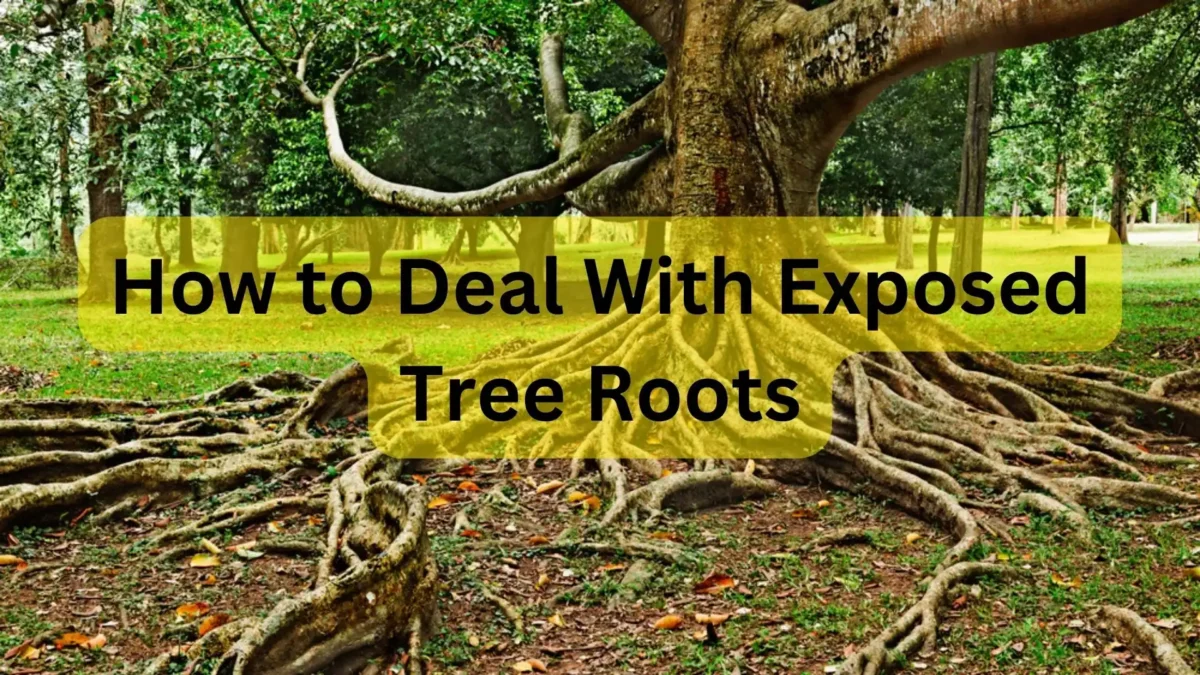
How to Deal With Exposed Tree Roots
Trees are majestic additions to our landscapes, providing shade, beauty, and environmental benefits. However, sometimes tree roots become exposed, creating an unsightly appearance and potential tripping hazards. While exposed roots can be concerning, there are ways to address them without harming the tree. This comprehensive guide will explore the causes of exposed roots, the dangers of improper handling, and effective solutions to promote healthy tree growth.
Understanding Exposed Tree Roots
Tree roots play a vital role in anchoring the tree, absorbing water and nutrients from the soil. Several factors can contribute to exposed roots:
- Erosion: Heavy rain, strong winds, or improper grading can wash away soil, leaving roots vulnerable.
- Soil Compaction: Compacted soil restricts air and water flow, forcing roots to grow closer to the surface for sustenance.
- Construction Activities: Excavation or trenching near trees can sever roots, leading to compensatory root growth near the surface.
- Natural Growth Pattern: Certain tree species, like oaks and maples, have a naturally shallow root system that may become exposed over time.
Why Cutting Exposed Roots is Detrimental
While exposed roots may seem like an eyesore, it’s important to understand that cutting tree roots without killing the tree is extremely difficult and ill-advised. Here’s why:
- Root System Damage: Roots, even small ones, are essential for a tree’s health. Cutting them disrupts the tree’s ability to absorb water and nutrients, potentially leading to decline or death.
- Increased Disease Susceptibility: Cutting exposes the tree to potential pathogens and diseases that can enter through the wound.
- Destabilization: Roots anchor the tree, and significant root removal can compromise stability, especially in windy conditions.
Effective Solutions for Exposed Tree Roots
Instead of resorting to cutting, there are several effective ways to manage exposed tree roots:
Applying Mulch
Mulch is a fantastic solution for exposed tree roots. It offers numerous benefits:
- Moisture Retention: A 2-3 inch layer of mulch around the base of the tree (extending to the drip line) helps retain moisture in the soil, benefiting the exposed roots.
- Temperature Regulation: Mulch insulates the roots from extreme temperature fluctuations, protecting them from heat stress in summer and freeze damage in winter.
- Weed Suppression: Mulch discourages weed growth, which can compete with the tree for water and nutrients.
- Improved Soil Structure: Over time, mulch decomposes, enriching the soil and promoting healthy root growth.
- Important Note: Avoid piling mulch directly against the tree trunk, as this can trap moisture and encourage rot. Leave a few inches of space between the trunk and the mulch layer.
Creating a Groundcover
Planting a shade-loving groundcover beneath the tree can be a visually appealing solution. Here’s what to consider:
- Plant Selection: Choose low-growing, shade-tolerant plants that won’t compete with the tree for resources. Ferns, hostas, and certain types of ivy are good options.
- Planting Location: Plant the groundcover beyond the root zone (drip line) to avoid competition for water and nutrients.
- Maintenance: Regularly weed and maintain the groundcover to prevent it from becoming overgrown and smothering the roots.
- Avoidance: Refrain from planting grass directly under the tree. Grass requires frequent watering and mowing, which can disrupt the delicate root system.
Addressing Underlying Causes
While mulching and groundcovers address the exposed roots themselves, it’s also crucial to address the underlying causes:
- Erosion Control: If erosion is the culprit, consider planting erosion-control plants or installing a retaining wall to prevent further soil loss.
- Soil Aeration: Compacted soil can be addressed by core aeration, a process that creates channels in the soil to improve air and water flow.
- Proper Watering Practices: Water the tree deeply and infrequently, encouraging roots to grow deeper into the soil for moisture.
Conclusion
Exposed tree roots may seem like a problem, but with proper care and management, they can be addressed without harming the tree. Remember, cutting tree roots above ground or below should be a last resort, and only undertaken by a qualified arborist if absolutely necessary. By applying mulch, creating a groundcover, and addressing the root cause, you can ensure that your trees remain healthy and beautiful for years to come.



